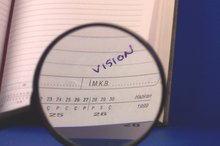What does fact checked mean?
At Healthfully, we strive to deliver objective content that is accurate and up-to-date. Our team periodically reviews articles in order to ensure content quality. The sources cited below consist of evidence from peer-reviewed journals, prominent medical organizations, academic associations, and government data.
- Neuropsychiatric Disease and Treatment: Addressing the Unmet Needs of Patients with Persistent Negative Symptoms of Schizophrenia -- Emerging Pharmacological Treatment Options
- Neuropsychiatric Disease and Treatment: Addressing the Unmet Needs of Patients with Persistent Negative Symptoms of Schizophrenia -- Emerging Pharmacological Treatment Options
- Clinical Psychology Review: Psychosocial Treatments for Negative Symptoms in Schizophrenia -- Current Practices and Future Directions
- Clinical Psychology Review: Psychosocial Treatments for Negative Symptoms in Schizophrenia -- Current Practices and Future Directions
- Schizophrenia Bulletin: Attention to Irrelevant Cues Is Related to Positive Symptoms in Schizophrenia
- Schizophrenia Bulletin: Attention to Irrelevant Cues Is Related to Positive Symptoms in Schizophrenia
The information contained on this site is for informational purposes only, and should not be used as a substitute for the advice of a professional health care provider. Please check with the appropriate physician regarding health questions and concerns. Although we strive to deliver accurate and up-to-date information, no guarantee to that effect is made.
Positive & Negative Symptoms of Schizophrenia
Schizophrenia is a chronic and disabling brain disorder that usually manifest between the ages of 13 and 25, with males typically displaying symptoms earlier than females. Individuals experience profound distorted perceptions, and thus are not grounded in reality. Schizophrenia characteristics include a distorted perception of the world, distorted thought and speech, as well as a disturbed sense of self and safety. Schizophrenia is not a split or multiple personality; rather, it is categorized as a type of psychosis, which is a severe and devastating mental illness.
Symptom Overview
Schizophrenia involves a range of diverse and, at times, bizarre symptoms that typically appear as disturbed psychotic manifestations; for example, hearing voices, hallucinations or experiencing sensations not congruent with reality, and holding false beliefs (delusions) that do not match objective reality. There is no primary symptom that specifically indicates schizophrenia, and diagnosis depends on the history of a pattern of behavior involving multiple domains. Symptoms usually are classified as either positive or negative, and may occur at the same time. According to an article published in 2014 by "Neuropsychiatric Disease and Treatment," up to 26 percent of people with schizophrenia have persistent negative symptoms 1.
- Schizophrenia involves a range of diverse and, at times, bizarre symptoms that typically appear as disturbed psychotic manifestations; for example, hearing voices, hallucinations or experiencing sensations not congruent with reality, and holding false beliefs (delusions) that do not match objective reality.
Positive Symptoms
Schizophrenia Types of Hallucinations
Learn More
Positive symptoms refer to mental disturbances in the patient’s perception of reality that do not exist objectively. Positive symptoms include delusions or strongly held, yet distorted beliefs (for example, "delusions of grandeur" are when disturbed thought makes patients feel that they are important or famous people). Delusions also may involve beliefs about being followed or even poisoned, as in paranoid delusions. Another delusion example is the belief that someone or something, be it the TV or an alien in space, is sending messages or controlling them. Hallucinations are included as a positive sign where a patient's perception of the senses are disturbed, such as hearing something (auditory hallucination) or the most common hallucination of seeing something that does not exist. Other positive symptoms include manifested disorganization of speech and thought, as well as disorganization of actions (for example, performing behaviors that appear weird or bizarre to others, known as "social disinhibition").
- Positive symptoms refer to mental disturbances in the patient’s perception of reality that do not exist objectively.
- Positive symptoms include delusions or strongly held, yet distorted beliefs (for example, "delusions of grandeur" are when disturbed thought makes patients feel that they are important or famous people).
Negative Symptoms
Negative symptoms refer to mental abilities which the patient has lost or abilities that the patient can no longer perform. Negative symptoms are more difficult to identify since they are not as overt as positive symptoms. Lack of initiative, drive or goal-orient behaviors may occur, as well as a sense of apathy and the preference of being alone or isolated from others. Additionally, there may be a change in expressing emotions (for example, emotional “blunting” is when the individual displays minimal or severely decreased emotional response to issues in daily life).
- Negative symptoms refer to mental abilities which the patient has lost or abilities that the patient can no longer perform.
- Additionally, there may be a change in expressing emotions (for example, emotional “blunting” is when the individual displays minimal or severely decreased emotional response to issues in daily life).
Related Articles
References
- Neuropsychiatric Disease and Treatment: Addressing the Unmet Needs of Patients with Persistent Negative Symptoms of Schizophrenia -- Emerging Pharmacological Treatment Options
- Clinical Psychology Review: Psychosocial Treatments for Negative Symptoms in Schizophrenia -- Current Practices and Future Directions
- Schizophrenia Bulletin: Attention to Irrelevant Cues Is Related to Positive Symptoms in Schizophrenia
- Tandon R. Schizophrenia and Other Psychotic Disorders in Diagnostic and Statistical Manual of Mental Disorders (DSM)-5: Clinical Implications of Revisions from DSM-IV. Indian J Psychol Med. 2014;36(3):223-5. doi: 10.4103/0253-7176.135365
- Patel KR, Cherian J, Gohil K, Atkinson D. Schizophrenia: overview and treatment options. P T. 2014;39(9):638-45.
- Boutros NN, Mucci A, Diwadkar V, Tandon R. Negative symptoms in schizophrenia. Clin Schizophr Relat Psychoses. 2014;8(1):28-35B. doi: 10.3371/CSRP.BOMU.012513
- Targum SD, Keefe RS. Cognition and schizophrenia: is there a role for cognitive assessments in diagnosis and treatment?. Psychiatry (Edgmont). 2008;5(12):55-9.
- Picchioni MM, Murray RM. Schizophrenia. BMJ. 2007;335(7610):91-5. doi: 10.1136/bmj.39227.616447.BE
- Schizophrenia: a detailed booklet that describes symptoms, causes, and treatments, with information on getting help and coping. National Institutes of Mental Health. (2006) http://www.nimh.nih.gov/health/publications/schizophrenia/summary.shtml
- American Psychiatric Association. (2013). Diagnostic and statistical manual of mental disorders (5th ed.). Arlington, VA: American Psychiatric Publishing.
- Morrison, J. DSM-IV Made Easy: the Clinician’s Guide to Diagnosis. New York: The Guilford Press, 2006.
- Torrey, E.F. Surviving Schizophrenia: a Manual for Families, Patients and Providers, 5th Edition. New York: HarperCollins Publishers, 2006.
Writer Bio
A.M. Tacon is an associate professor of health at Texas Tech University. Her research interests include psychosocial factors in cancer, complementary therapies and stress reduction in individuals with cancer. Dr. Tacon runs mindfulness-based stress reduction programs for women with breast cancer, which is based on various forms of mindfulness meditation.









